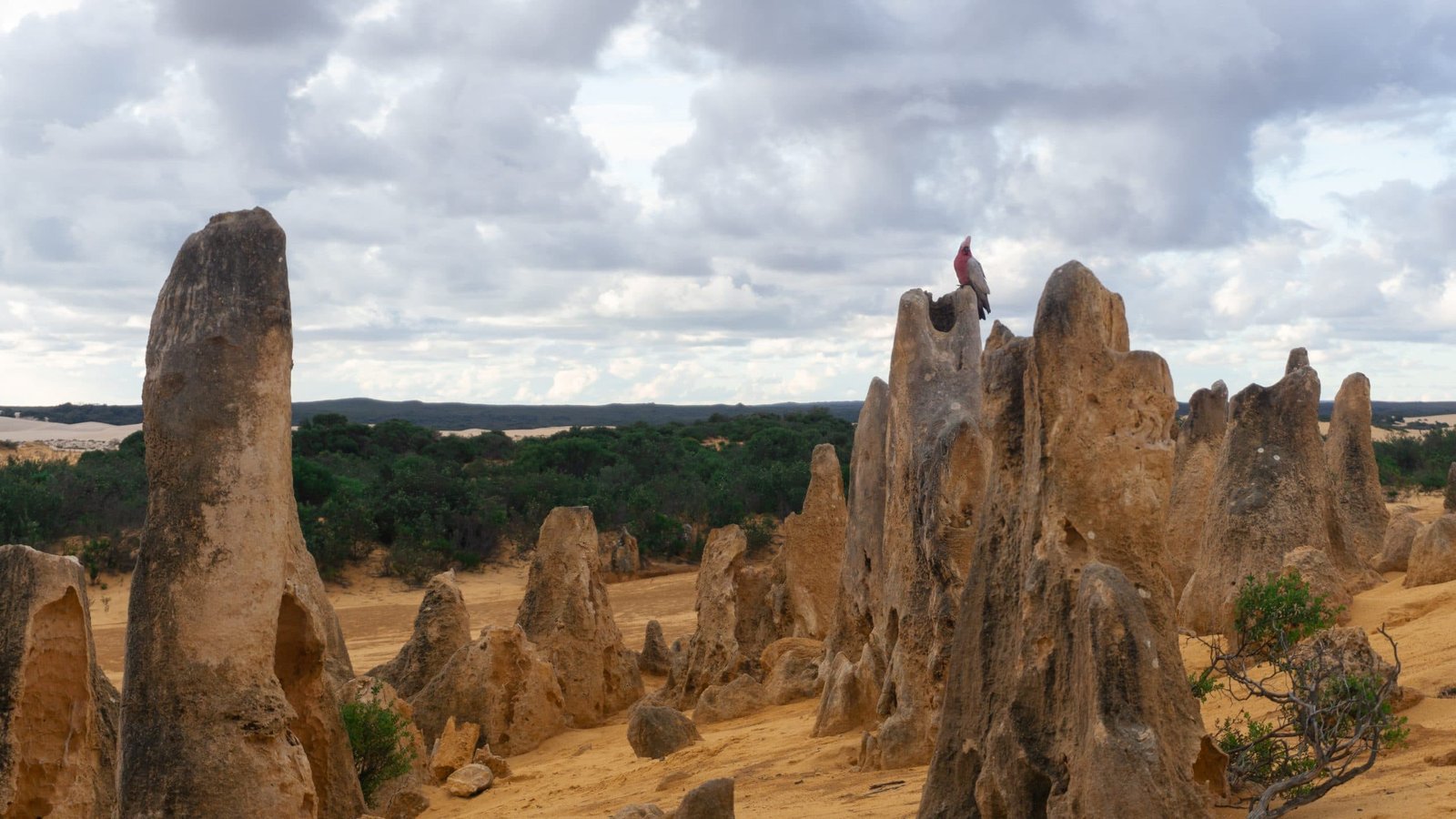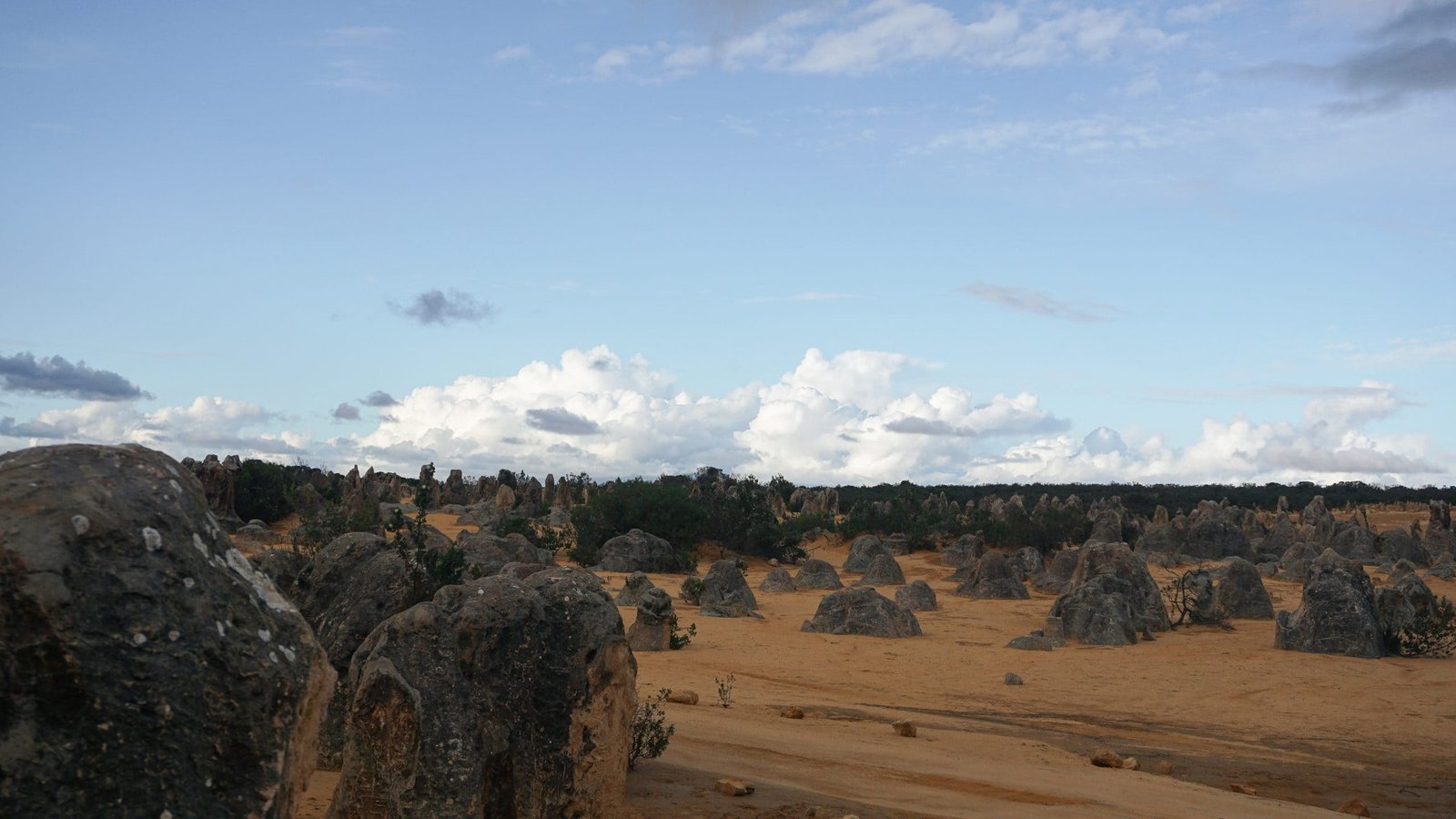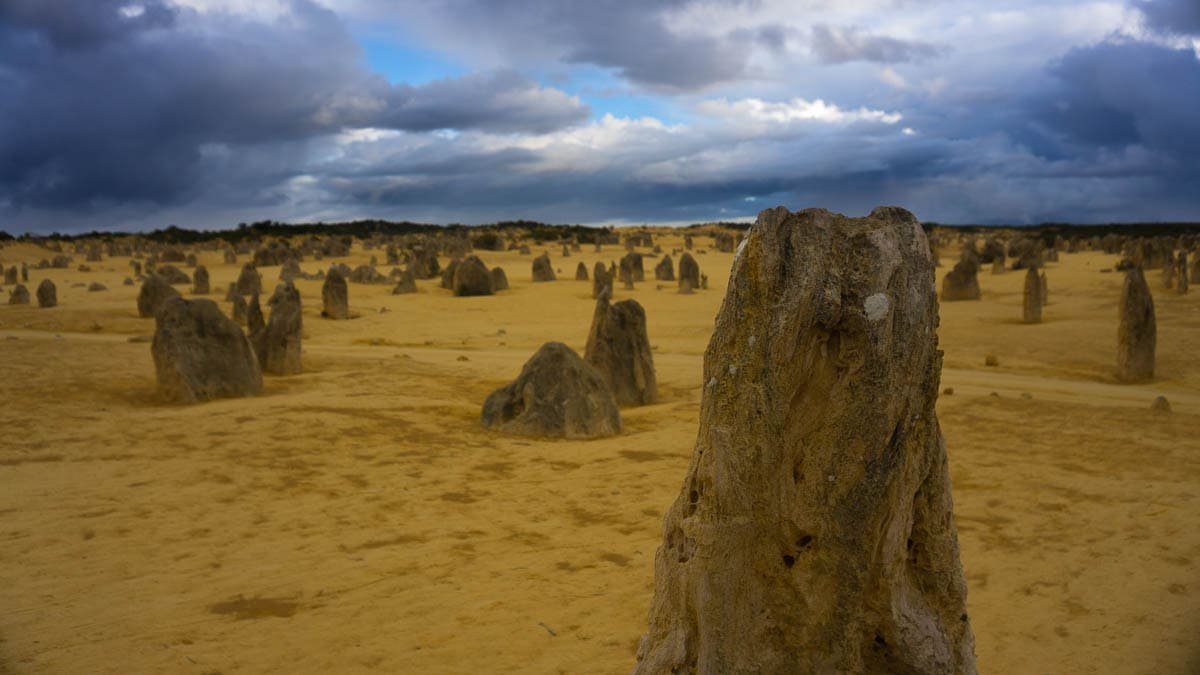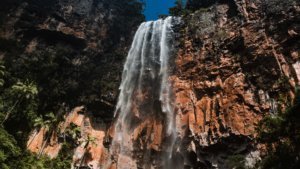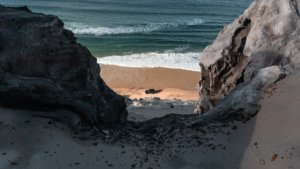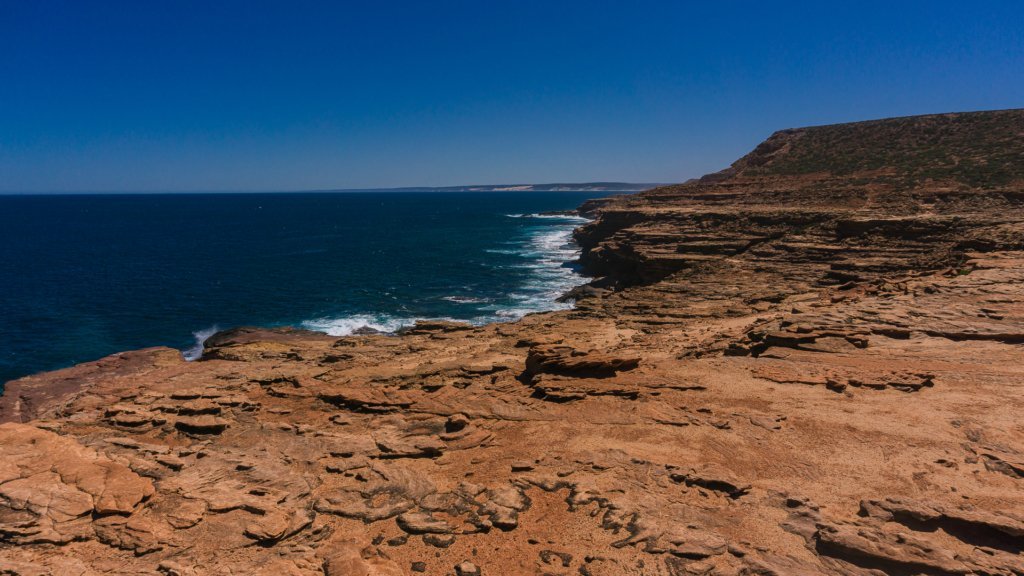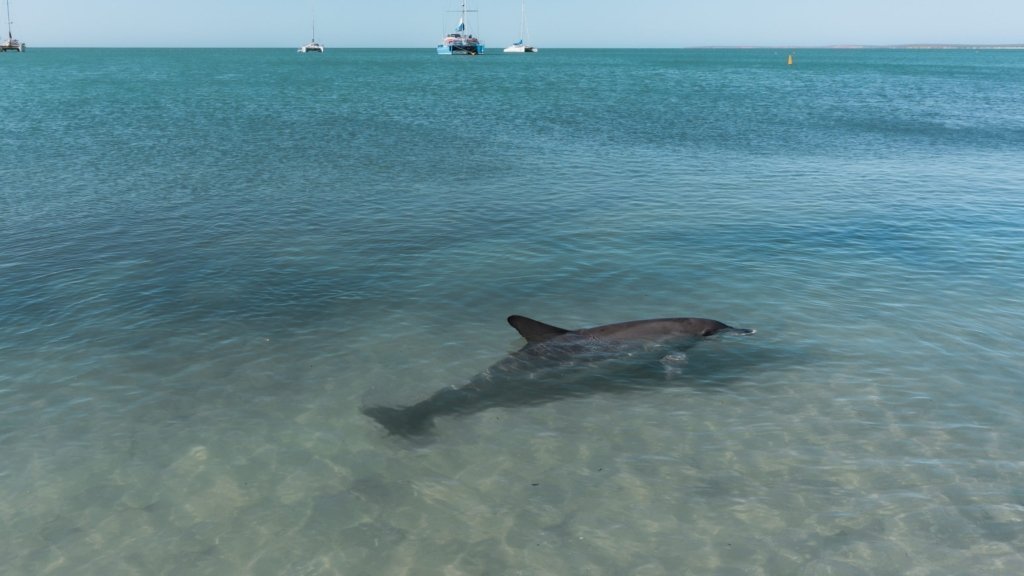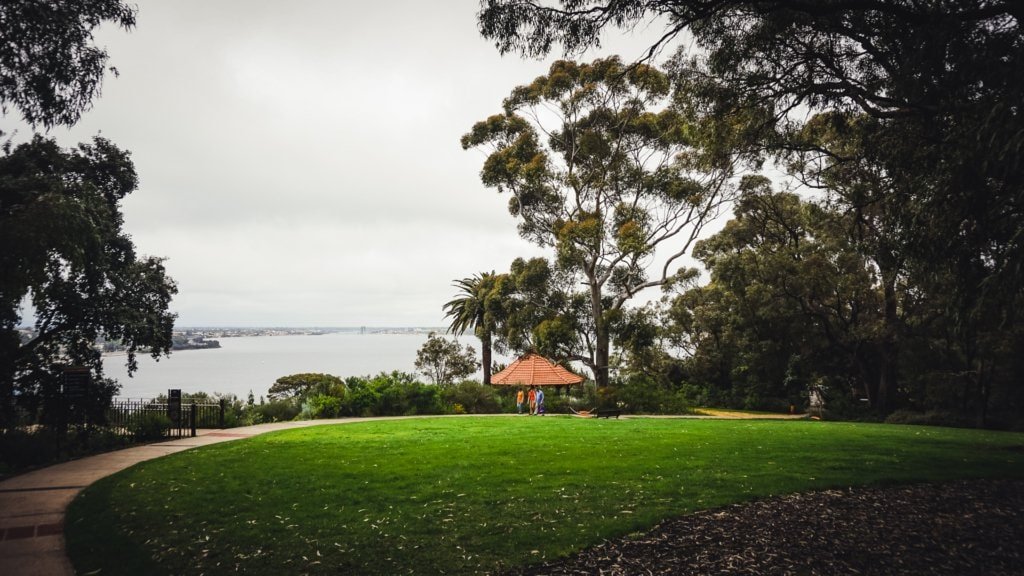With its unique limestone pillars and mesmerising desert landscape, Pinnacles Desert, a breathtaking natural wonder in Nambung National Park in Western Australia, attracts visitors from around the world. This extraordinary region is not only a photographer’s and nature lover’s paradise, it is also deeply rooted in Australia’s geological history.
Location and access
The Pinnacles Desert is located in Nambung National Park, about 200 kilometres north of Perth, Western Australia. The stunning desert landscape, with its breathtaking backdrop of yellow sand dunes and bizarre limestone formations, is easily accessible via the Indian Ocean Drive. The park covers over 17,000 hectares and is a popular destination for visitors who want to enjoy the natural beauty and unique geological features of the area.
History and formation
These formations were created around 25,000 to 30,000 years ago when the sea withdrew from the area, leaving behind shells. Over time these shells formed limestone which was exposed by wind and water erosion. The pinnacles themselves are the result of complex geological processes. One theory is that plant roots penetrated deep into the limestone, breaking it in places. These places absorbed a lot of water, making the limestone particularly hard. Over time, the surrounding sand eroded away, leaving only the hardest limestone columns.
The area was first set aside as a nature reserve in 1967 and was incorporated into the newly established Nambung National Park in 1994. The landscape, often described as ‘lunar’, attracts thousands of visitors each year who come to admire the bizarre, up to four metre high rock columns.
Flora and fauna
The Pinnacles Desert is not only known for its fascinating limestone columns, but also for its impressive flora and fauna. The region’s vegetation is typical of Western Australia’s coastal landscape. It includes a variety of plant species that have adapted to the arid conditions. During the wildflower season from July to November, the desert is a sea of colour dominated by a variety of wildflower species.
The wildlife is equally diverse. Kangaroos, emus and almost 100 bird species live in this unique environment. Reptiles such as the shingleback lizard and bobtail lizard are common, while the wedge-tailed eagle soars high above the desert. These animals contribute to the ecological diversity of the park and have adapted perfectly to the harsh conditions of the desert.
Advise for visitors
A visit is worthwhile at any time of year, but the region is particularly impressive during the wildflower season from July to November. This is when the desert is a spectacular natural spectacle, bursting with vibrant colours.
A good place to start learning about the history and geology of the Pinnacles is the Pinnacles Desert Discovery Centre. The centre offers informative exhibitions and guided tours and is open daily from 9.30am to 4.30pm.
There is an entrance fee of AUD 15 per vehicle to visit Nambung National Park. The park is easily accessible and can be driven in a normal car. Toilets and picnic areas make for a pleasant visit.
Activities and sights
- Hiking and driving: There is a 2km walking track and a 4.5km driving track through the Pinnacles. Both routes have plenty of photo opportunities and lookouts to view the scenery and wildlife.
- Starry sky: When night falls, the Pinnacles Desert transforms into one of the best places for stargazing. The view of the Milky Way and other celestial bodies is ideal thanks to the clear air and remoteness.
- Wildlife watching: The park is home to many species including kangaroos, emus, birds and reptiles. Many animals are active and easy to spot, especially in the early morning and late evening hours.
Anyone visiting Western Australia should not miss the Pinnacles Desert. The unique landscape, fascinating geology and diverse recreational opportunities make this place an unforgettable experience.

